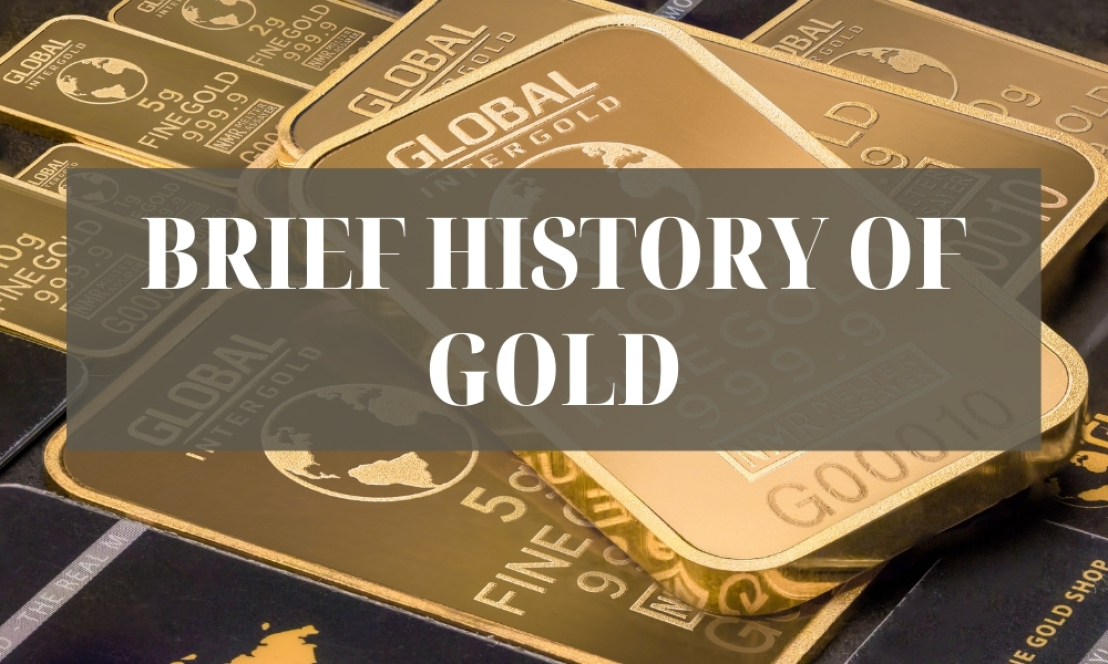Brief History of Gold

The most popular and the most treasured among the precious metal is Gold. Gold has got a lengthy history as a precious metal and it continues to create an interesting history. Through the Ancient Egyptian Civilization to present days, there aren't many precious metals that have created a very important function in the history of man like gold.
The First Civilizations and their appreciation for gold
Man's adoration and appreciation for gold is as old as history. There is no real record as to the specific era when man discovered the importance of gold. But records show that gold flakes had been discovered in Paleolithic caves which date back to as far as 40000 BC. A good number of archaeological data reveals that people who got into contact with gold ended up astounded by the precious metal. Because gold can be found around the globe, experts agree it is noted several times in the course of old ancient scrolls.
Gold during the Ancient Egyptian Civilization
History notes that the very first solid proof we have of human connection with gold is during the ancient Egyptian Civilization approximately around 3,000 B.C. Gold played out a vital role in ancient Egyptian myth and it was valued by pharaohs as well as temple priests. It absolutely was extremely important that even the capstones around the Pyramids of Giza were built of solid gold.
It was the Egyptians who created the very first currency exchange ratio that ruled the proper proportion of gold to silver: A piece of gold is equivalent to two and a half portions of silver. It is also the very first documented measurement where silver is far cheaper when compared to gold.
The Egyptians also have evidence of gold maps. A few of these maps thrive even to this day. These gold maps identified where to locate gold mines as well as other gold deposits across the Egyptian empire. Even as the Egyptians place the highest regard to gold, they have not used it as a trading instrument. Alternatively, most Egyptians made use of agricultural goods like barley to trade goods and services. The Kingdom of Lydia was the first recognizable civilization that made use of gold like money. It is an old civilization found in the west of Turkey.
Electrum (the natural alloy of silver and gold) had been used in jewelry making from 5000 BCE by the Egyptians. Both men and women have worn gold jewelry around 3000 BCE in the Sumer civilization. In 2500 BCE, the city of Ur was the first to produce gold chains.
Gold During the era of Ancient Greece
The Ancient Greeks perceived gold as a symbolic representation of social status and as a kind of glory among the immortal gods as well as demigods. People at that time would use gold as a manifestation of riches and gold had also been some type of unit of currency. As opposed to what everyone thinks, the Olympics culture of awarding gold medals to victors has not begun until the modern day Olympics and it has very little connection with the traditions of Greek.
Other Mentions of Gold in History
In the Bible, in the book of Genesis, it reads that the land of Havilah, just near Eden, is a site where excellent gold is found. Incans, Aztecs, and various other civilizations also made use of gold prolifically during the entire early history, which includes religious rituals as well as in renowned architectural styles.
The common trend in history is that gold is a symbol of status previously used to distinguish one particular class from the other. The elites, the priests, the emperors, the upper middle class, are those members of the society that had used gold as the basis of their power and rightful place in the community.
After the first accounts of gold in early history, gold continued on to make history, contributing a very significant role in the history of man. In our modern world, gold is the basis of currency for each country and had been one of the most traded metals in stocks.
Gold continued on to be among the most valuable investments, especially in jewelry collection. Gold maintained its place being the most preferred precious metal in jewelry making.


Comments : 0